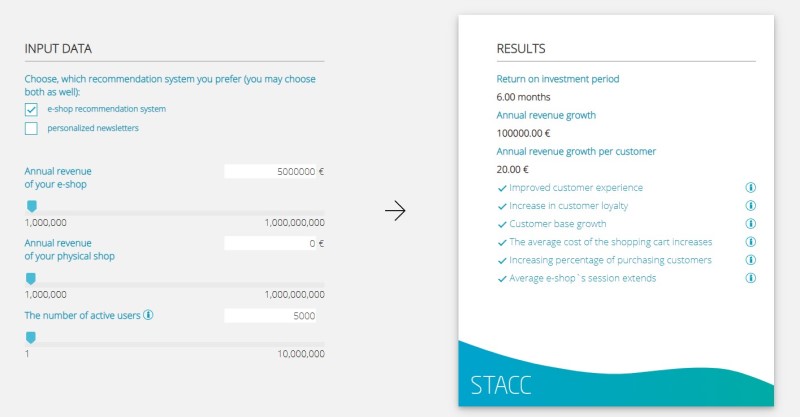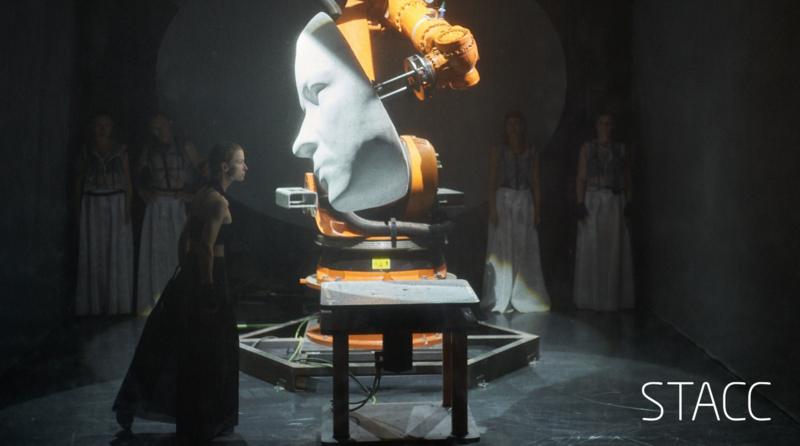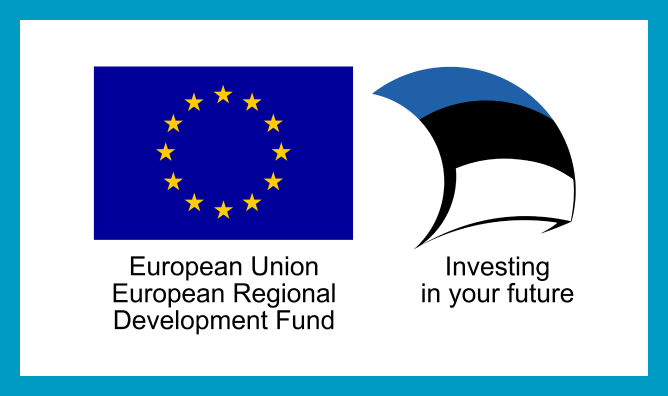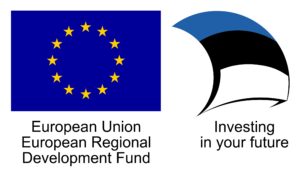Take a look, try it out and read more whether and to what extent a recommendation system can benefit your e-business.
Restrictions on the spread of the COVID-19 virus significantly changed people’s shopping behavior, and a large number of customers discovered the unlimited opportunities of e-commerce. The number of e-shops has also increased dramatically. However, how to stand out from the increasing competition and the huge selection to make the most of the growing sales numbers in the field of e-commerce? At STACC, we believe that the key lies in recommendation systems.
Recommendation systems are a great way to increase sales by bringing more customers to your e-shop or increasing the average cost of the shopping cart. There are even more possibilities to gain profits. For example, the system allows you to fine-tune and personalize e-mail campaigns or extend the sessions of your e-shop, providing the visitor a pleasant experience and displaying the desired products.
Recommendation systems are most widely used probably in e-commerce and marketing, but they also play an important role in recommending suitable contacts on social media, interesting content in online media and preferred entertainment on streaming platforms such as Spotify or Netflix. You can read more in our previously published blog story „Recommender system as the central component of a successful web store“.
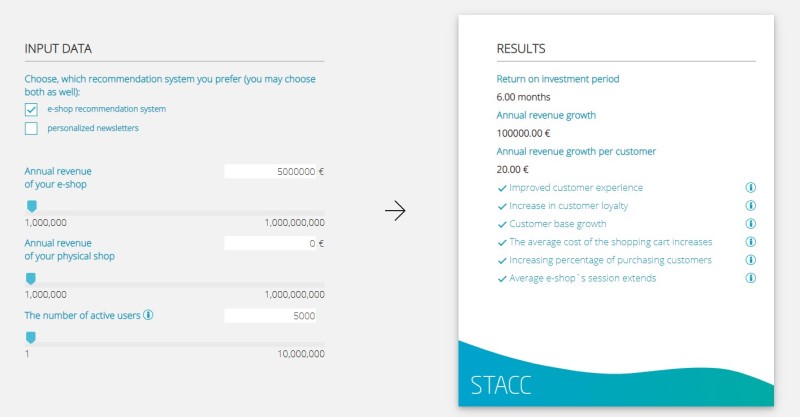 Profitability calculator for STACC`s recommendation system
Profitability calculator for STACC`s recommendation system
However, each innovative idea or new technology costs money, so it is reasonable to assess its profitability before making an investment.
That is why our team has developed a profitability calculator for STACC`s recommendation system, with which you can try out different scenarios and see how would it work for your business.
With the help of the calculator, it is possible to find answers to questions such as when the investment for the implementation of the recommendation system pays off and to what extent the turnover may grow resulting from the recommendations.
Take a look and try out our profitability calculator for STACC`s recommendation system.
Past, present and future of recommendation systems
Recommendation systems date back to the early 1990s, when the potential for collaborative filtering began to be realized, and the first e-commerce giants like Amazon wanted to enable their customers to browse products and alternatives in virtual environment. Then the question arose: which products out of thousands to display?
The answer had to be hidden in the data, so different technologies were tested to recommend specific products in a personalized way: the customers were shown the options they would most likely want to buy next. In addition to sales, offering customers alternative choices became equally important to make their shopping experience more enjoyable.
In the second half of the 1990s, the leap of ICT development took place and a technology bubble began to emerge, which soon burst. In addition to selling online and the abundance of choices, the importance of customer relationships and pricing was also added to the big picture. The highest value was attributed to the attention of customers, for which companies began to compete. The key was seen in recommendation systems to attract and retain customers.
The development of recommendation systems gained new momentum in the early 2000s when the streaming platform Netflix announced the competition “The Netflix Prize” to find the most efficient algorithm to best identify the products that customers desire. The grand prize was $ 1 million. Many contestants tried to find and tested new algorithms and combined the best, and finally, on September 21, 2009, BellKor’s Pragmatic Chaos team was declared the winner for being able to increase Netflix’s algorithm prediction accuracy by 10.06%. After that, a hangover hit the field, when those involved looked back for a moment and draw conclusions from what had been learned.
Today, countless algorithms are used in recommendation systems. However, an effective recommendation system does not only provide data to the model, which then generates accurate recommendations but also requires thorough preparation, reflection and business instincts. Among other things, in addition to understanding the data, answers to the following questions must be found:
- what are the use cases and the value proposition that the recommendations create,
- how to strike a balance between recommendations,
- what to do with already popular products – whether to recommend them or not,
- either recommends products that have already been purchased or rather avoid them,
- when to re-recommend products already purchased,
- which products should definitely not be recommended to one or another target group,
- whether products and services that are rarely purchased but of high value (eg a house or a surgeon) can be recommended at all,
- etc.
The world of referral systems is exciting because there is actually a lot more to discover. How to predict as accurately as possible what the customer would desire next after purchasing one or another product? Or, by combining data mining and machine learning, business and marketing, how much can a recommendation system earn immediately and how much investment will be carried to the future to shape a lifelong customer?
Referred from Coursera’s lecture “Recommendation Systems: Past, Present and Future“.
 Fun facts and statistics
Fun facts and statistics
Below we have gathered a number of exciting facts about recommendation systems based on different materials (see links at the end of the story):
- 1-5% turnover growth affected by recommendations
- personal recommendations are 2.2 times more effective than general bestsellers
- 10 minutes longer session on the website displaying recommendations (2.9 min without recommendations vs. 12.9 min with recommendations)
- 14% higher email CTR due to personal recommendations
- 19% higher shopping cart value due to recommended products
- 20% of products generate 80% of sales
- 24% of the shopping cart contents were recommended products
- 26% customers are more likely to open a newsletter if its headline is personal
- 35% of Amazon’s sales were generated by cross-sale and upsale products
- 56% of users return to a website that suggests alternatiive products
- 67% higher turnover per customer due to cross-selling banners
- 74% of mail recipients are annoyed when receiving an email with marketing content that has nothing to do with their wishes or interests
- 75% of digital-conscious customers expect a personal shopping experience
- 550% more likely will a visitor who clicks on the recommendations get to the purchase.
Evergage’s 2018 Trends in Personalization Survey
The Pareto principle in marketing – definition and examples
Key Success Factors for Customer Journey Enhancement in E-Commerce
New Rules of Email Marketing [2019]
7 Product Recommendation Engines Your Online Store Needs
6 Product Recommendation Examples in Ecommerce and Best Practices to Use Them Wisely
Personalized Product Recommendations Drive Just 7% of Visits but 26% of Revenue
Advanced Product Recommendation Tactics to 3x Revenue
Nosto Case Studies
Measuring the Business Value of Recommender Systems (https://www.researchgate.net/publication/335337263_Measuring_the_Business_Value_of_Recommender_Systems#pf13)
